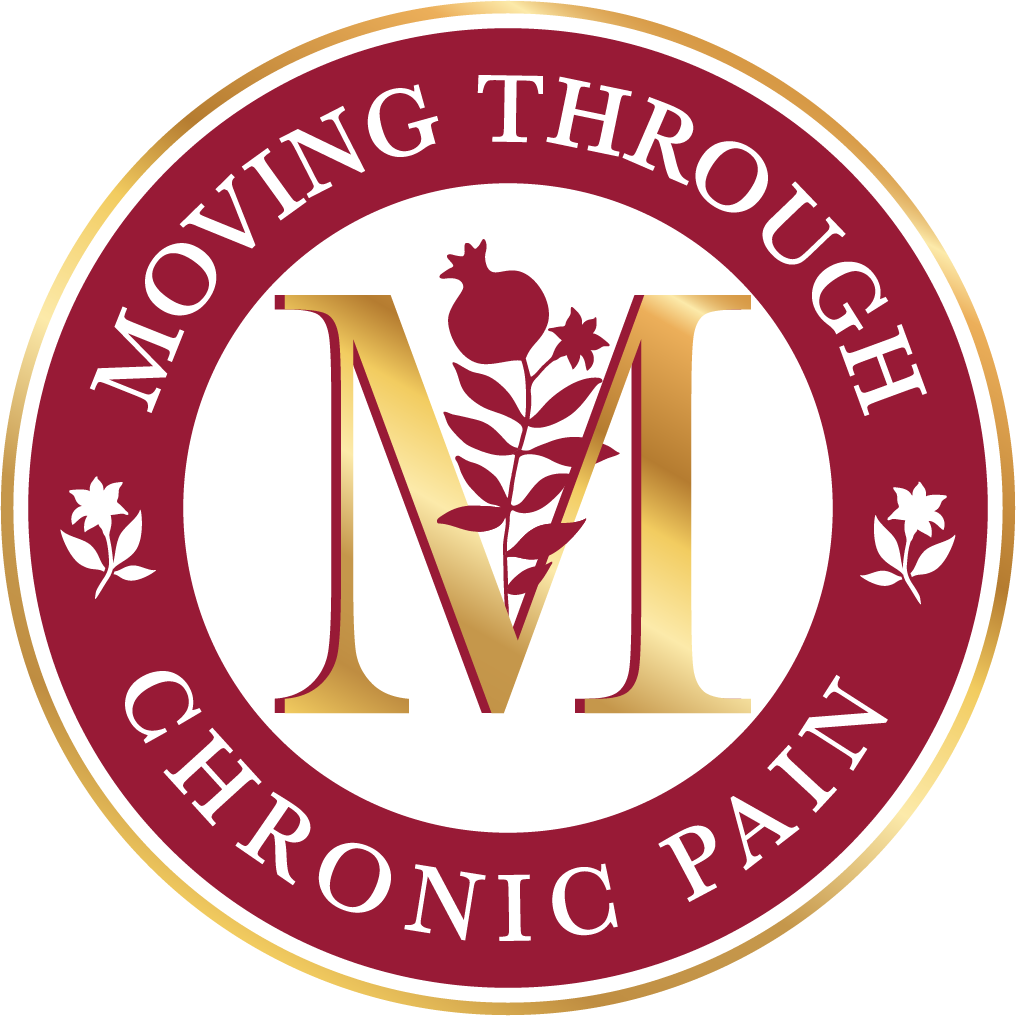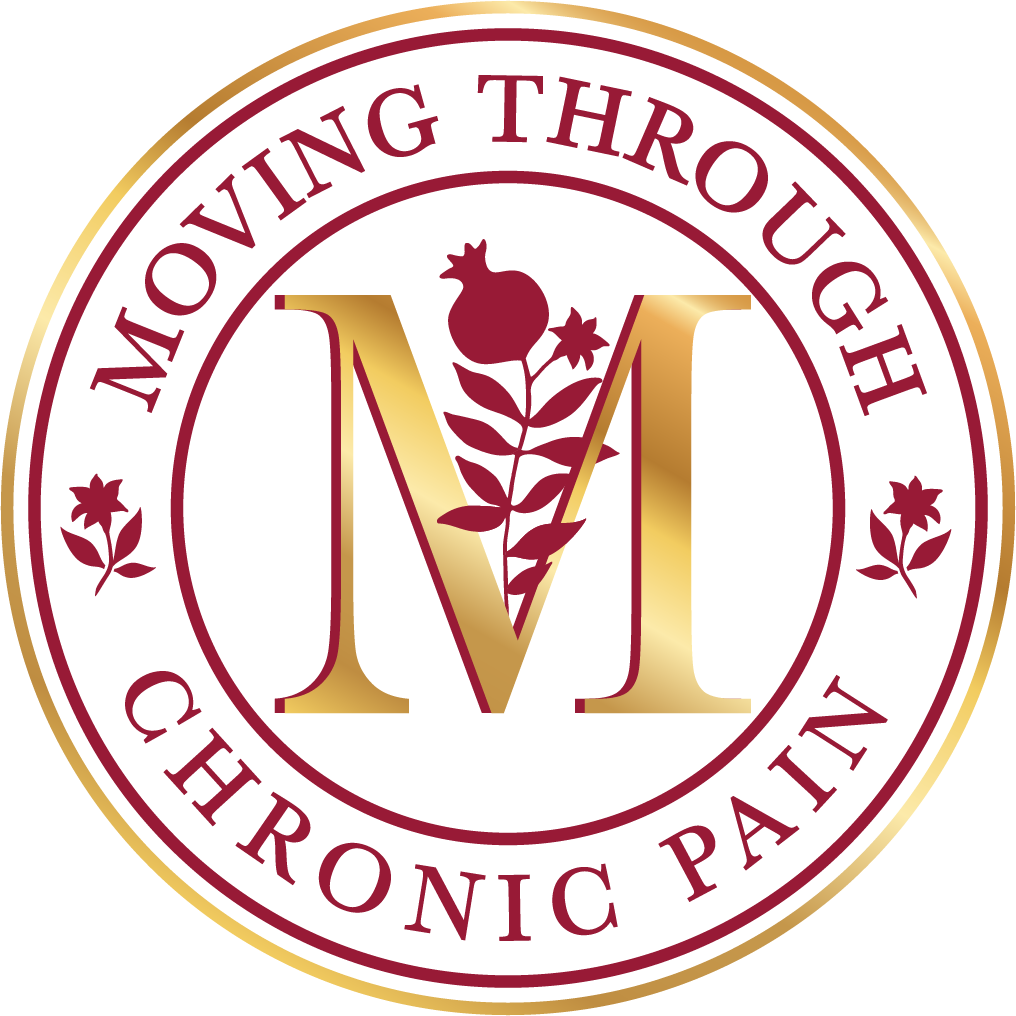HELPING MAKE YOUR CHRONIC PAIN JOURNEY EASIER
The pain cHronic•les
LATEST BLOG ARTICLES

Chronic pain is a complex and often misunderstood condition that affects millions of people around the world. It's important to note that every individual's experience with chronic pain can be unique, and what works for one person may not necessarily work for another. I’ll will be providing some insights into the causes, mechanisms, and challenges of chronic pain based on my personal experience in the hopes that it will help make your chronic pain journey easier.

Michelle Marikos, Founder & CEO
Moving Through Chronic Pain

Travel
HELPING MAKE YOUR CHRONIC PAIN JOURNEY EASIER
EMBRACING A LOVE OF TRAVELING DESPITE CHRONIC PAIN


Real-world tips for adventurous globetrotters
For as long as I can remember, I have loved to travel. I grew up in a family who loved to plan grand adventures and seek out new experiences. In school, my best friends would invite me on their family trips, and after graduating high school, I spent a summer abroad in Turin, Italy, including a summer semester at the university there. Throughout my teens and early twenties, any time anyone asked if I wanted to travel to a certain place, whether it was a cruise, a ski trip, a cross-continent train journey, a road trip, my answer was yes.
Travel is something that is just in my soul. For others who have the same feeling, you’ll know what I mean. I can’t help but constantly wonder what else is out there. I want to see it all, I want to experience it.
When a fall from a balcony in my early twenties left me with multiple injuries and a long and challenging road to get my life back on track, I had to hit the pause button on my travel plans. It was during this time that I realized just how much travel meant to me. And how the chronic pain I have lived with ever since the accident was not going to railroad me; somewhere buried beneath the layers of my pain, I knew that my desire to see the world was still alive. As I began to heal, I made it my mission to allow myself to resume my daydreaming about the places I wanted to travel to despite my pain, the constant fatigue and other health issues.
Cut to the present day – I think I can describe myself as well traveled. And the same can be said for my pain. Even though pain has been my constant companion for more than 20 years now, it hasn’t stopped me from traveling. Of course, it’s not always easy. There are always challenges, such as finding accessible accommodation, managing pain medication and dealing with flare-ups.
But my love for travel draws me in; it eclipses all the potential obstacles that my pain might present. It ignites my sense of adventure, provides a window into different cultures, and offers me a very welcome break from the monotony of daily chores.
Since the birth of our son four years ago, my husband and I have endeavored to instill our shared ‘wanderlust’ in him, exploring new places together, collecting new memories as we rack up a significant number of states (and a few overseas territories) on our visit list. It feels good to know that we are opening his mind, immersing ourselves in new sights, sounds, and flavors, strengthening our family bond, growing together and learning from one another in different ways to when we are at home stuck in our daily routine.
One thing traveling with chronic pain has taught me is that I can still accomplish what anyone else can — just in a different way. It may require extra planning and packing, but it’s worth it and definitely doable. It’s taken a while to figure out what works for me and what does not, and that’s still in process – every trip presents new opportunities for reflection: how things could be done differently, what I should have packed, what I should not have done…but these are small details; for me, travel broadens my mind and feeds my soul, and it plays a key role in supporting my chronic pain journey.
What is holding you back?
For those of us living with chronic pain, the thought of traveling can evoke feelings of anxiety and apprehension. You may find yourself plagued by a ‘Why bother?’ mindset. There are many reasons why you may put off traveling:
Physical strain – travel is exhausting for everyone, as we lug around suitcases, stand in long lines, sit for hours in cramped vehicles or planes, navigate huge stations or airports. For someone with chronic pain, these activities can exacerbate pain and feel simply overwhelming, often leading to pain flare-ups that can last for days.
Unpredictability of pain – one of the most challenging aspects of living with chronic pain is its inconsistency. Pain can flare up without warning, turning a planned day of sightseeing into a day confined to a hotel room. This makes it difficult to plan activities in advance. It’s easy to fall into a trap of thinking it’s not worth the frustration, hassle and disappointment of having to change or cancel plans due to pain.
Barriers everywhere – despite advancements in accessibility, many travel destinations and modes of transport are still not fully equipped to accommodate those with chronic pain. Can you be bothered to scour the internet to find the hotels with elevators? Where will you find accessible restrooms, restaurants, and transportation options? It’s just another layer of difficulty, often leading to unnecessary stress; the easier option being to simply not bother.
Medication management – traveling with medications is a must when you live with chronic pain. Ensuring you have an adequate supply, dealing with strict airport security regulations, and the fear of losing medications can be overwhelming. Additionally, time zone changes can disrupt medication schedules, complicating routines. This worry about managing medications can overshadow the joy of travel.
Emotional and mental strain – the constant worry about potential pain flare-ups, the need to explain your condition to strangers, and the fear of judgment or misunderstanding can take a significant emotional toll. This stress can exacerbate pain and lead to feelings of isolation and helplessness, further complicating the travel experience.
Financial burden – traveling with chronic pain often incurs additional costs. From booking accessible accommodations to purchasing travel insurance that covers pre-existing conditions, the financial burden can be substantial. Additionally, unexpected medical expenses or the need to cancel plans due to a pain flare-up can lead to additional costs, making travel less accessible and appealing.
Navigating the challenges – and making travel with chronic pain work!
Despite the potential obstacles, fears and challenges, there are ways we can still enjoy travel when living with chronic pain. The key lies in meticulous planning, being aware of your limits, and seeking support when needed.
Understand your limits – over the years, I’ve learned to listen to my body and recognize the signs of over-exertion. This self-awareness is crucial when planning any activity, especially travel. I know that pushing myself too hard can lead to severe pain flare-ups, so I pace myself and avoid over-scheduling.
Advance planning – the key to a successful trip starts long before you leave home. Choose destinations with good medical facilities, accessible accommodations, and a climate that doesn’t aggravate your pain. Research hotels that offer amenities like elevators, accessible rooms, and proximity to key locations. Inform the hotel staff about your condition in advance to ensure they can accommodate your needs. I always opt for the most accessible options available, even if they come at a higher cost. It’s worth it; I speak from experience.
Consult your healthcare provider before you travel – have a consultation to discuss your plans and get personalized advice. Create an emergency plan outlining what to do if your pain becomes unmanageable or if you face a medical emergency. Having this kind of plan in place will help provide peace of mind.
Plan out your journey – whether you’re flying, driving, or using another kind of transport, there are ways to make the journey more comfortable. For air travel, request wheelchair assistance at airports and opt for direct flights to minimize layovers. Investing in priority boarding will give you extra time to get settled. Choose seats that offer more legroom and comfort, such as aisle or bulkhead seats. Move around whenever possible to prevent stiffness, and do gentle stretches to maintain circulation. When driving, plan for frequent stops to stretch and move around. Use cushions or lumbar support to enhance comfort during long drives. Remember, rest periods are key – incorporate ample periods to simply ‘be’, take a breath and reset, even if you are in the middle of nowhere. Always listen to your body.
Pack smart – your suitcase isn’t just for clothes – it’s your mobile toolkit for managing pain. Pack enough medication for the entire trip, plus a little extra in case of delays. Keep them in their original containers with prescription labels to avoid any issues at security checkpoints. Don’t forget your comfort items: heat packs, cold packs, cushions, portable massagers – whatever you reach for when you need a little relief. Documentation is also crucial. Carry a letter from your doctor detailing your condition and medications. This can be invaluable if you need medical assistance or to explain your needs at security checkpoints.
Plan out your days mindfully – remember, rest is vital. Allow for downtime in your itinerary; over-scheduling can lead to exhaustion and increased pain, so balance activities with periods of relaxation. Pay attention to your pain levels and symptoms, and adjust your activities accordingly. Your body’s signals are crucial guides. Prepare yourself mentally too – accept that you may experience pain flare-ups and have a plan in place for managing them.
Make the most of technology – travel apps can be lifesavers, helping you find accessible restaurants, accommodations, and attractions. Set up telemedicine options with your healthcare provider in case you need medical advice while traveling.
Connect with local support groups or online communities – this is a great way to share experiences and get tips and advice on traveling with chronic pain. Hearing how others manage similar challenges can be both encouraging and insightful. Their stories can be a source of strength, showing that while traveling with chronic pain is challenging, it is not out of reach. Your pain does not have to ruin your travel dreams.
Embrace the journey!
Traveling with chronic pain requires extra preparation and care, but it is completely doable. By taking proactive steps and listening to your body, you can enjoy new experiences and create meaningful memories.
Don’t let chronic pain hinder your exploration of the world’s wonders!
If you have any personal stories or additional tips on traveling with chronic pain, I’d love to hear from you. Sharing our experiences can help build a supportive community and make each journey a bit easier for someone else.
#chronicpain #understandingpain #painawareness #peersforpain #invisibleillness #travelandpain #travel
Michelle Marikos’ fall from a balcony in her early twenties, and her subsequent decades long debilitating chronic pain, inspired her to launch Moving Through Chronic Pain and her PEER™ Method programs to facilitate deeper connections between those living with chronic pain and their community of providers, employers, and family members.

Michelle Marikos, Founder & CEO
Moving Through Chronic Pain

Travel
HELPING MAKE YOUR CHRONIC PAIN JOURNEY EASIER
EMBRACING A LOVE OF TRAVELING DESPITE CHRONIC PAIN


Real-world tips for adventurous globetrotters
For as long as I can remember, I have loved to travel. I grew up in a family who loved to plan grand adventures and seek out new experiences. In school, my best friends would invite me on their family trips, and after graduating high school, I spent a summer abroad in Turin, Italy, including a summer semester at the university there. Throughout my teens and early twenties, any time anyone asked if I wanted to travel to a certain place, whether it was a cruise, a ski trip, a cross-continent train journey, a road trip, my answer was yes.
Travel is something that is just in my soul. For others who have the same feeling, you’ll know what I mean. I can’t help but constantly wonder what else is out there. I want to see it all, I want to experience it.
When a fall from a balcony in my early twenties left me with multiple injuries and a long and challenging road to get my life back on track, I had to hit the pause button on my travel plans. It was during this time that I realized just how much travel meant to me. And how the chronic pain I have lived with ever since the accident was not going to railroad me; somewhere buried beneath the layers of my pain, I knew that my desire to see the world was still alive. As I began to heal, I made it my mission to allow myself to resume my daydreaming about the places I wanted to travel to despite my pain, the constant fatigue and other health issues.
Cut to the present day – I think I can describe myself as well traveled. And the same can be said for my pain. Even though pain has been my constant companion for more than 20 years now, it hasn’t stopped me from traveling. Of course, it’s not always easy. There are always challenges, such as finding accessible accommodation, managing pain medication and dealing with flare-ups.
But my love for travel draws me in; it eclipses all the potential obstacles that my pain might present. It ignites my sense of adventure, provides a window into different cultures, and offers me a very welcome break from the monotony of daily chores.
Since the birth of our son four years ago, my husband and I have endeavored to instill our shared ‘wanderlust’ in him, exploring new places together, collecting new memories as we rack up a significant number of states (and a few overseas territories) on our visit list. It feels good to know that we are opening his mind, immersing ourselves in new sights, sounds, and flavors, strengthening our family bond, growing together and learning from one another in different ways to when we are at home stuck in our daily routine.
One thing traveling with chronic pain has taught me is that I can still accomplish what anyone else can — just in a different way. It may require extra planning and packing, but it’s worth it and definitely doable. It’s taken a while to figure out what works for me and what does not, and that’s still in process – every trip presents new opportunities for reflection: how things could be done differently, what I should have packed, what I should not have done…but these are small details; for me, travel broadens my mind and feeds my soul, and it plays a key role in supporting my chronic pain journey.
What is holding you back?
For those of us living with chronic pain, the thought of traveling can evoke feelings of anxiety and apprehension. You may find yourself plagued by a ‘Why bother?’ mindset. There are many reasons why you may put off traveling:
Physical strain – travel is exhausting for everyone, as we lug around suitcases, stand in long lines, sit for hours in cramped vehicles or planes, navigate huge stations or airports. For someone with chronic pain, these activities can exacerbate pain and feel simply overwhelming, often leading to pain flare-ups that can last for days.
Unpredictability of pain – one of the most challenging aspects of living with chronic pain is its inconsistency. Pain can flare up without warning, turning a planned day of sightseeing into a day confined to a hotel room. This makes it difficult to plan activities in advance. It’s easy to fall into a trap of thinking it’s not worth the frustration, hassle and disappointment of having to change or cancel plans due to pain.
Barriers everywhere – despite advancements in accessibility, many travel destinations and modes of transport are still not fully equipped to accommodate those with chronic pain. Can you be bothered to scour the internet to find the hotels with elevators? Where will you find accessible restrooms, restaurants, and transportation options? It’s just another layer of difficulty, often leading to unnecessary stress; the easier option being to simply not bother.
Medication management – traveling with medications is a must when you live with chronic pain. Ensuring you have an adequate supply, dealing with strict airport security regulations, and the fear of losing medications can be overwhelming. Additionally, time zone changes can disrupt medication schedules, complicating routines. This worry about managing medications can overshadow the joy of travel.
Emotional and mental strain – the constant worry about potential pain flare-ups, the need to explain your condition to strangers, and the fear of judgment or misunderstanding can take a significant emotional toll. This stress can exacerbate pain and lead to feelings of isolation and helplessness, further complicating the travel experience.
Financial burden – traveling with chronic pain often incurs additional costs. From booking accessible accommodations to purchasing travel insurance that covers pre-existing conditions, the financial burden can be substantial. Additionally, unexpected medical expenses or the need to cancel plans due to a pain flare-up can lead to additional costs, making travel less accessible and appealing.
Navigating the challenges – and making travel with chronic pain work!
Despite the potential obstacles, fears and challenges, there are ways we can still enjoy travel when living with chronic pain. The key lies in meticulous planning, being aware of your limits, and seeking support when needed.
Understand your limits – over the years, I’ve learned to listen to my body and recognize the signs of over-exertion. This self-awareness is crucial when planning any activity, especially travel. I know that pushing myself too hard can lead to severe pain flare-ups, so I pace myself and avoid over-scheduling.
Advance planning – the key to a successful trip starts long before you leave home. Choose destinations with good medical facilities, accessible accommodations, and a climate that doesn’t aggravate your pain. Research hotels that offer amenities like elevators, accessible rooms, and proximity to key locations. Inform the hotel staff about your condition in advance to ensure they can accommodate your needs. I always opt for the most accessible options available, even if they come at a higher cost. It’s worth it; I speak from experience.
Consult your healthcare provider before you travel – have a consultation to discuss your plans and get personalized advice. Create an emergency plan outlining what to do if your pain becomes unmanageable or if you face a medical emergency. Having this kind of plan in place will help provide peace of mind.
Plan out your journey – whether you’re flying, driving, or using another kind of transport, there are ways to make the journey more comfortable. For air travel, request wheelchair assistance at airports and opt for direct flights to minimize layovers. Investing in priority boarding will give you extra time to get settled. Choose seats that offer more legroom and comfort, such as aisle or bulkhead seats. Move around whenever possible to prevent stiffness, and do gentle stretches to maintain circulation. When driving, plan for frequent stops to stretch and move around. Use cushions or lumbar support to enhance comfort during long drives. Remember, rest periods are key – incorporate ample periods to simply ‘be’, take a breath and reset, even if you are in the middle of nowhere. Always listen to your body.
Pack smart – your suitcase isn’t just for clothes – it’s your mobile toolkit for managing pain. Pack enough medication for the entire trip, plus a little extra in case of delays. Keep them in their original containers with prescription labels to avoid any issues at security checkpoints. Don’t forget your comfort items: heat packs, cold packs, cushions, portable massagers – whatever you reach for when you need a little relief. Documentation is also crucial. Carry a letter from your doctor detailing your condition and medications. This can be invaluable if you need medical assistance or to explain your needs at security checkpoints.
Plan out your days mindfully – remember, rest is vital. Allow for downtime in your itinerary; over-scheduling can lead to exhaustion and increased pain, so balance activities with periods of relaxation. Pay attention to your pain levels and symptoms, and adjust your activities accordingly. Your body’s signals are crucial guides. Prepare yourself mentally too – accept that you may experience pain flare-ups and have a plan in place for managing them.
Make the most of technology – travel apps can be lifesavers, helping you find accessible restaurants, accommodations, and attractions. Set up telemedicine options with your healthcare provider in case you need medical advice while traveling.
Connect with local support groups or online communities – this is a great way to share experiences and get tips and advice on traveling with chronic pain. Hearing how others manage similar challenges can be both encouraging and insightful. Their stories can be a source of strength, showing that while traveling with chronic pain is challenging, it is not out of reach. Your pain does not have to ruin your travel dreams.
Embrace the journey!
Traveling with chronic pain requires extra preparation and care, but it is completely doable. By taking proactive steps and listening to your body, you can enjoy new experiences and create meaningful memories.
Don’t let chronic pain hinder your exploration of the world’s wonders!
If you have any personal stories or additional tips on traveling with chronic pain, I’d love to hear from you. Sharing our experiences can help build a supportive community and make each journey a bit easier for someone else.
#chronicpain #understandingpain #painawareness #peersforpain #invisibleillness #travelandpain #travel
Michelle Marikos’ fall from a balcony in her early twenties, and her subsequent decades long debilitating chronic pain, inspired her to launch Moving Through Chronic Pain and her PEER™ Method programs to facilitate deeper connections between those living with chronic pain and their community of providers, employers, and family members.

Michelle Marikos, Founder & CEO
Moving Through Chronic Pain

